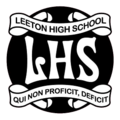| Leeton High School | |
|---|---|
 | |
 Leeton High School, pictured in 2012 | |
| Location | |
 | |
Australia | |
| Coordinates | 34°32′50″S146°24′19″E / 34.5472°S 146.4052°E |
| Information | |
| Former name | Leeton District School |
| Type | Government-funded co-educational comprehensive secondary day school |
| Motto | Latin: Qui Non Proficit, Deficit [1] (Those who do not profit [by what we offer], lose) |
| Established | 1926 (as Leeton District School) |
| School district | Narrandera; Rural South and West |
| Educational authority | NSW Department of Education |
| Principal | Meagan Crelley |
| Teaching staff | 42.9 FTE (2018) [2] |
| Enrolment | 465 [2] (2018) |
| Campus | Regional |
| Colours | Black, white, grey |
| Website | leeton-h |
| [3] | |
Leeton High School (abbreviated as LHS) is a government-funded co-educational comprehensive secondary day school, located in Leeton in the Riverina region of New South Wales, Australia.
Contents
Established in 1926 as Leeton's first high school and is now one of three secondary schools serving the Leeton Shire, the school enrolled approximately 470 students in 2018, from Year 7 to Year 12, of whom 13 percent identified as Indigenous Australians and nine percent were from a language background other than English. [2] The school is operated by the New South Wales Department of Education; the principal is Meagan Crelley. [4]
